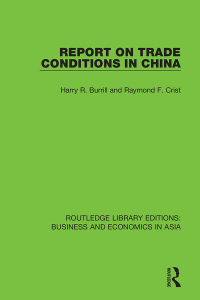Question
Questions. In your evaluations, please ignore the time value of money. Here is the basic setup of the project. Today Orion has to decide whether
Questions.
In your evaluations, please ignore the time value of money. Here is the basic setup of the project. Today Orion has to decide whether to deliver to Avion 50 old valves or to invest in, and eventfully manufacture, 50 new valves. If it decides to deliver old valves, the price per valve is $10,000 and the variable cost per valve is $8,000. If Orion decides to invest in the new valve, it has to spend $120,000 to develop new software. Software developer needs to use a short-cut to develop this software in a short period of time. This short-cut will be successful with 75% and the project will move to the next stage; the short-cut will fail with complementary 25% probability, in which case in order to move to the next stage Orion has to spend additional $240,000 to make this software successful. Once the software is successfully developed, in the next stage Orion has to redesign the valve by spending $80,000. This redesign effort will be successful with 90% probability, in which case there is 80% probability that improvements will be dramatic and 20% probability that improvements will be modest. If improvements are dramatic the price per valve will be $20,000 and the variable cost per valve will be $10,500. If improvements are modest the price per valve will be $12,000 and the variable cost per valve will still be $10,500. However, the redesign effort can also fail with complementary probability of 10%, in which case Orion will deliver old valves with unit price per valve of $10,000 and unit variable cost per vale of $8,000.
- Assume that Armstrong will develop and deliver the new valve regardless of economic consequences (to uphold the reputation of his firm as industry leader). In other words, Armstrong will deliver the old valve only if the redesign effort fails; in all other cases, Armstrong will develop and deliver the new valve either with dramatic or modest improvements. Build a decision tree that shows the cash flows and probabilities at all stages of the project development. What is the expected value of the new valve project under these assumptions? What would you recommend to Orion and why?
- Now assume that economic consequences are important. If improvements are modest, Armstrong may decide to deliver the old valve instead of the new one (since it is economically more beneficial, which you need to demonstrate). Also, if the short-cut fails, Armstrong again may decide to deliver the old valve, instead of spending additional funds on the software and the valve redesign (since it will be economically more beneficial, which you need to demonstrate). Build a decision tree that shows the cash flows and probabilities at all stages of the project development. What is the expected value of the new valve project under these new assumptions? What would you recommend to Orion?
- Which approach (in part 1 or in part 2) will have a greater chance/probability of developing a new dramatically improved valve? Which approach should Armstrong adopt if his objective is short-term financial performance? What if his objective is long-term market development and customer satisfaction?
- Again assume that Armstrong will develop and deliver the new valve regardless of economic consequences, as in part 1. Armstrong was upset with Harringtons reluctance to devote sufficient resources to this project to guarantee the success of the valves redesign. If Harrington could guarantee the success of the valves redesign (in other words, assuming the redesign effort is successful with 100% probability), how much her reluctance was affecting the value of the project?
- Again assume that Armstrong will develop and deliver the new valve regardless of economic consequences, as in part 1. Armstrong contacted Professor Calliope, a world-renowned expert on software design, for her opinion on whether Geminis short-cut would work. She said she and her team could make an extraordinary effort and evaluate the short-cut very quickly, but their fee would be $30,000. The benefit of doing this is that if Calliope says the short-cut will fail (there is a 25% probability of her coming to this conclusion), then Orion does not have to invest in the software development and all subsequent stages, and instead will deliver the old valve (since it will be economically more beneficial, which you need to demonstrate). However, if Calliope says the short-cut will be successful (there is a 75% probability of her coming to this conclusion), then Orion will invest in the software development and all subsequent stages. Is it worth paying $30,000 to Professor Calliope to know whether the short-cut will be successful or not?
- Based on your analysis, are there any means by which the risks associated with this project can be managed? How can the downside exposure be reduced? How can the chances of success be enhanced?
Step by Step Solution
There are 3 Steps involved in it
Step: 1

Get Instant Access to Expert-Tailored Solutions
See step-by-step solutions with expert insights and AI powered tools for academic success
Step: 2

Step: 3

Ace Your Homework with AI
Get the answers you need in no time with our AI-driven, step-by-step assistance
Get Started


